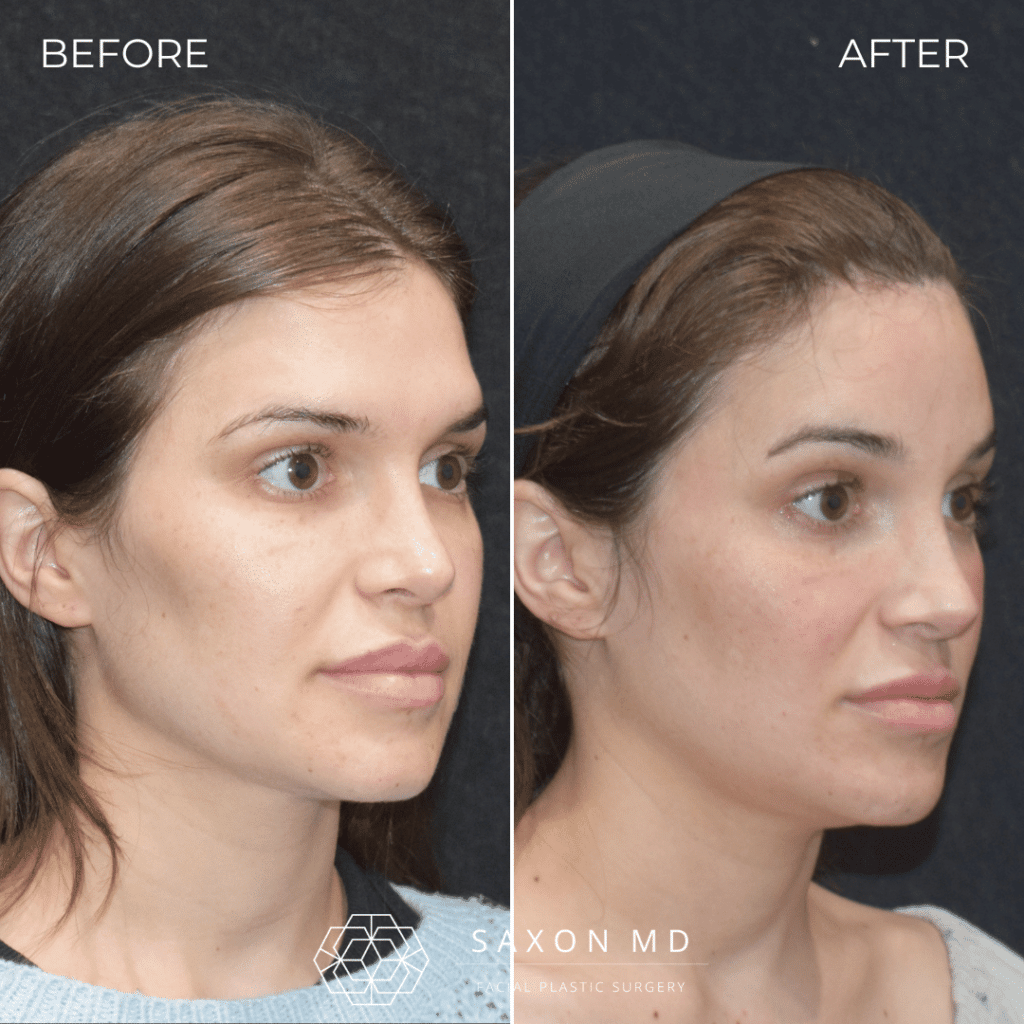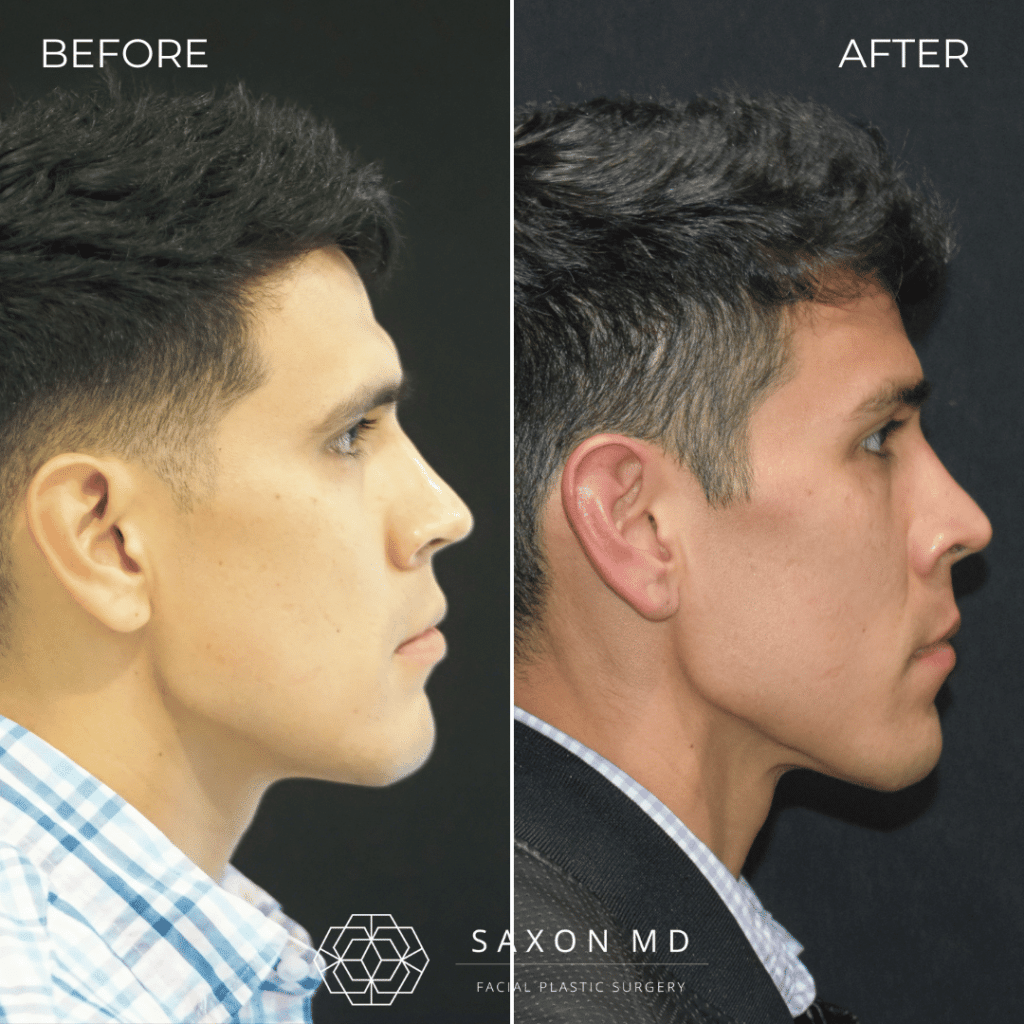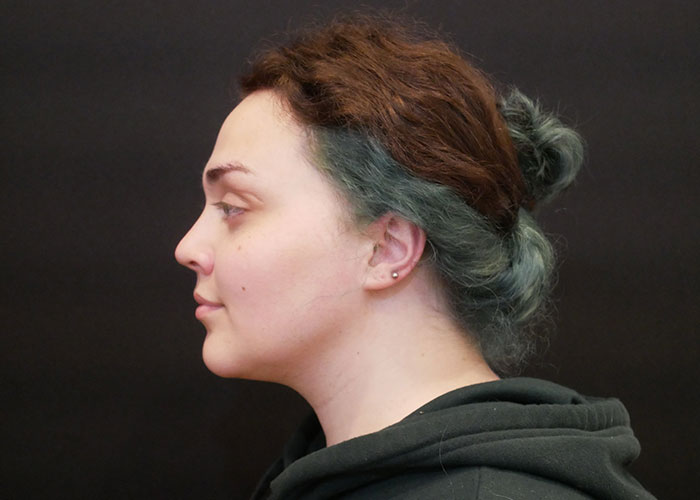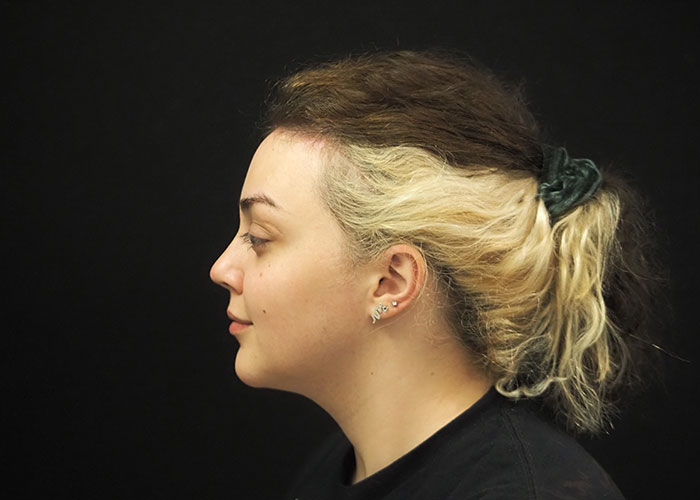Brow Bone Reduction
Forehead

Achieve a Balanced, Feminine Look
The upper portion of your face plays a significant role in defining your overall appearance and femininity. Brow bone reduction surgery, performed by Dr. Sarah Saxon, a leading facial plastic surgeon, can sculpt the bone above your eyes to create a more balanced and aesthetically pleasing look.
A Brow Bone Reduction is ideal for individuals who:
- Desire a more balanced and feminine upper facial appearance.
- Have prominent brow bones that cast shadows over the eyes.
- Seek to create a smoother transition between the forehead and nose.
A Brow Lift Corrects:
- Desire a more balanced and feminine upper facial appearance.
- Have prominent brow bones that cast shadows over the eyes.
- Seek to create a smoother transition between the forehead and nose.
What is a Brow Bone Reduction?

A brow bone reduction, or cranioplasty, is a procedure that sculpts the bone over the eyes to allow light to accentuate the upper face. The key to creating the best result with brow bone reduction is addressing the frontal sinus. This sinus is a pocket of air of varying size, beginning at the top of the nose and extending up into the forehead. The majority of individuals require more than just shaving down the bone.
To create a smooth contour between the forehead down to the nose requires entering into the sinus and setting the bone back. Once an ideal contour is achieved, the bone is set into position with titanium plates and screws. In technical terms, this is called a type 3 cranioplasty. At the same time, the bone of the orbital ridge is sculpted to reduce shadowing laterally.
Benefits of Brow Bone Reduction:
- Improves masculine facial features
- Brings more light into the eyes
- Softens facial features
Types of Brow Bone Reduction
Common Procedures Performed with Brow Bone Reduction

While a brow bone reduction can be done as a standalone procedure, it is often paired with hairline lowering and/or a brow lift. Reducing the volume of the brow ridge often leads to excess skin laxity in the forehead which causes the brows to descend. A brow lift is almost always necessary to place the brows in a more proper position to optimize results. At the same time, the incision made for brow bone reduction is the same as that for hairline lowering. In those that have a high hairline or temporal recession, hairline lowering is done at the same time to improve the aesthetics of the whole upper third of the face without added downtime. Our forehead package bundles these 3 procedures together and is a favorite at Saxon MD.
Incision placement for Brow Bone Reduction
What is Recovery Like After Brow Bone Reduction?
During the initial recovery period, you may experience numbness in the forehead and scalp area due to the stretching and pulling of nerves during the surgery. Minor swelling and bruising can occur around the eyes, which typically go away in about 7-10 days. Most do not experience significant pain after a brow lift. Tylenol or ibuprofen is typically all that is needed to help with any discomfort.
Take it easy for a few days and follow Dr. Saxon’s postoperative instructions to ensure smooth healing. Over several weeks or months, the sensation will gradually return to the affected areas. The procedure will result in lifted eyebrows, making your eyes look more prominent and alert. Dr. Saxon’s careful incisions ensure that most people don’t realize you’ve undergone surgery.
Brow Bone Reduction FAQs
How much downtime will I have after brow bone reduction?
Bruising and swelling usually peak at 48 hrs and start to diminish afterward. You will be given specific instructions on how to minimize this, and a nurse will stay with you the first night to ensure you are well-cared for. Sutures and clips are removed in one week. At this time, bruising can still be present but most swelling is minimal. Most can go back to normal activities within 2 weeks.
Is brow bone reduction painful?
The first day after surgery can feel like a tension headache. Instructions are given to alternate Tylenol and ibuprofen, and stronger pain medications are given if needed. Dr. Saxon performs regional anesthesia with nerve blocks at the time of surgery to help with pain after your procedure. Most don’t need pain medication beyond over-the-counter medications after the first day.
What are the potential complications after brow bone reduction?
As in most surgeries, there is a risk of infection, fluid collection, numbness, and scar formation. Dr. Saxon gives very specific postoperative instructions to minimize this. In addition, a condition called shock hair loss can be seen where hair follicles can go into their dormant phase. Some hair shedding can be seen because of this but will then grow back over several months to 1 year.
How long will I have to stay in town if I'm traveling for brow bone reduction?
If you are traveling from out of town, you will be required to stay in town for 1 week until sutures and clips are removed. If you live within 3 hours of the office, you can go home after the first day and return for your 1 week follow-up appointment. You will not be permitted to drive after surgery until the swelling has resolved and you are not using narcotic pain medications.
Are there non-surgical alternatives to brow bone reduction?
Unfortunately, there are no non-surgical alternatives for brow bone reduction. Some attempt to get dermal filler injected into the forehead to camouflage shadows and contours from prominent bone. While this may provide a smooth contour, it does not accomplish the goal of brow bone reduction which is to bring more light into the eyes. This also carries a high risk of blindness if inadvertently injected into a vein in the forehead.
How much does brow bone reduction cost?
The cost of brow bone reduction varies depending on if other procedures are performed at the same time and complexity of the procedure. A consultation is needed to analyze your specific anatomy and goals.
- Blepharoplasty, Brow Bone Reduction, Brow Lift
The Real Reason You Have Hooded Eyes Hooded eyes are one of the most common concerns I hear from women
- Brow Bone Reduction
Forehead Contouring Without Fillers If you’ve ever looked in the mirror and felt like your forehead casts shadows that make
- Brow Bone Reduction
Frontal Bossing Explained Have you ever looked in the mirror and noticed that your forehead has a prominent ridge above
- Brow Bone Reduction, Brow Lift, Hairline Lowering
How to Get a Smaller Forehead If you’ve ever looked in the mirror and felt like your forehead dominates your
- Brow Bone Reduction
Brow Bone Reduction Complications If you’re considering brow bone reduction surgery, you probably have a lot of questions about what
Why Choose Saxon MD?
Dr. Sarah Saxon is a double-board-certified facial plastic surgeon in Austin and Dallas, Texas. Her patients come from all over the country to enjoy her artistic surgical experience for natural and beautiful results. Dr. Saxon is a leading facial plastic surgeon with a deep understanding of facial anatomy and extensive experience performing brow bone reduction procedures, including Type 3 reductions.
If you’re considering brow bone reduction surgery to achieve a more balanced and aesthetically pleasing upper face, contact Saxon MD today to schedule a consultation with Dr. Saxon.



